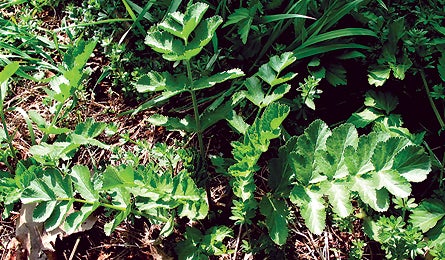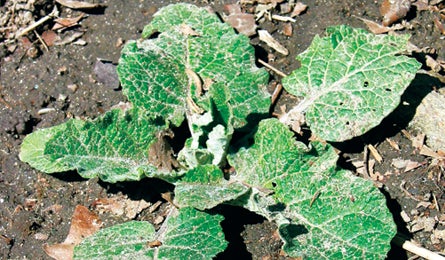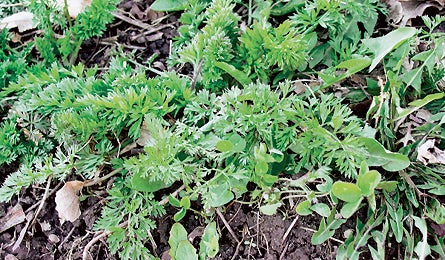Heading out the door? Read this article on the new Outside+ app available now on iOS devices for members! Download the app.

Wild Parsnip, Steve Brill

Burdock, Steve Brill

Wild Carrot, Steve Brill
Wild parsnip, burdock, and wild carrots grow in disturbed soil along forest edges, trails, and fields throughout North America. Always wear gloves and dig them out with your trowel or a sharpened stick. Learn more: Identifying and Harvesting Edible and Medicinal Plants in Wild (and Not-So-Wild) Places, Steve Brill, $23; Harper-Collins.
Wild Parsnip
Jagged leaflets sprout from multiple tiers on stalks up to 5 feet tall. The single, white taproot is distinct from the finger-like root bundles found in the toxic water hemlock. Harvest in late winter from wetlands and fields. Caution: Wear gloves to avoid a blistering toxin released by its leaves.
Burdock
Long-stalked, wedge-shaped leaves grow in clusters up to 4 feet long and 3 feet across. Leaf undersides are densely wooly. The white taproot extends 6 inches to 2 feet down in soil. Harvest in the spring and fall before spiky purple flowers and burrs appear in late spring during its second year.
Wild Carrot (Queen Anne’s Lace)
Feathery green leaves with fuzzy stalks resemble carrot tops. The taproot is whitish, carrot-scented, and 9 inches long. White, umbrella-like flowers sprout in year two. Harvest in spring and late fall. Caution: The toxic water hemlock looks similar, but has hairless stalks and no carrot odor.